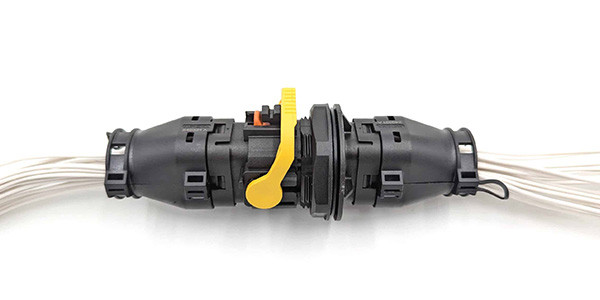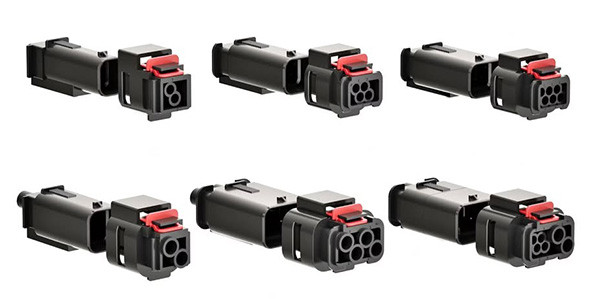Automotive Signal Connectors
A Comprehensive Exploration
Automotive Signal Connectors: A Comprehensive Exploration

Automotive signal connectors are indispensable components in modern vehicles, facilitating the seamless transmission of electrical signals between various electronic systems. These connectors ensure that critical systems such as engine management, safety features, infotainment, and emerging technologies like autonomous driving function effectively. As vehicles become increasingly sophisticated, the importance of reliable, robust, and advanced signal connectors continues to grow.
Table of Contents
ToggleIntroduction to Automotive Signal Connectors
Definition and Purpose
Automotive signal connectors are specialized electrical connectors designed to transmit signals—whether analog, digital, or control signals—between different components within a vehicle. Unlike power connectors, which primarily deliver electrical energy, signal connectors focus on enabling communication between sensors, actuators, electronic control units (ECUs), and other subsystems. These signals could include data from a temperature sensor, commands to deploy an airbag, or high-speed video feeds for an infotainment display.
Importance in Modern Vehicles
The modern vehicle is a marvel of electronic integration, often containing hundreds of connectors that form the backbone of its electrical architecture. These connectors are vital for ensuring that systems operate in harmony, from the engine’s precise fuel injection to the real-time responsiveness of advanced driver-assistance systems (ADAS). As vehicles evolve with electric powertrains, connectivity, and autonomy, signal connectors must meet increasingly stringent requirements for reliability, speed, and durability.
A Brief History and Evolution
The history of automotive connectors traces back to the early 20th century when vehicles relied on basic electrical systems for lighting and ignition. Early connectors were simple terminals or plugs focused on power distribution. The shift toward electronic control began in the 1970s and 1980s with the introduction of electronic fuel injection and anti-lock braking systems (ABS), necessitating connectors capable of handling low-voltage signals with high reliability. Today, with the rise of electric vehicles (EVs), hybrid electric vehicles (HEVs), and autonomous driving technologies, automotive signal connectors have evolved into highly engineered components tailored to diverse and demanding applications.
Types of Automotive Signal Connectors
Automotive signal connectors come in various forms, each suited to specific applications and environmental conditions. Below are the primary types:
Circular Connectors
Circular connectors are robust and often used in harsh environments, such as under the hood, where they connect sensors and actuators exposed to heat, vibration, and fluids. They typically feature threaded or bayonet coupling mechanisms for secure mating. Examples include:
- Deutsch DT Series: Widely used in heavy-duty applications for its environmental sealing and durability.
- Amphenol AT Series: Known for its rugged design and resistance to extreme conditions.
Rectangular Connectors
Rectangular connectors are compact and ideal for interior applications like infotainment systems, instrument clusters, and body control modules. They can accommodate numerous contacts in a small footprint. A notable example is:
- Molex CMC Series: Popular in automotive electronics for its reliability and versatility in wire-to-board connections.
PCB-Mounted Connectors
Printed circuit board (PCB)-mounted connectors link PCBs within ECUs, ensuring stable signal transmission despite vibrations and temperature fluctuations. These often include locking mechanisms or solderable pins. An example is:
- TE Connectivity MQS: A micro quadlock system used in automotive ECUs for its compact size and high reliability.
Specialized Connectors
- Header Connectors: Connect wiring harnesses to modules or ECUs, often mounted directly on PCBs.
- Fiber Optic Connectors: Used for high-speed data transmission in applications like infotainment or sensor networks.
- Coaxial Connectors: Transmit RF signals for GPS, cellular communication, or radar systems, maintaining signal impedance.
The choice of connector depends on factors like signal type, contact count, and environmental requirements, making each type a critical piece of the automotive puzzle.
Technical Specifications and Standards
Key Parameters
Automotive signal connectors must adhere to strict technical specifications to ensure performance and safety:
- Pin Count: Ranges from a few pins for simple sensors to over 100 for complex ECUs.
- Current and Voltage Ratings: Typically low for signal connectors but higher in hybrid applications (e.g., EVs).
- Mating Cycles: Indicates durability, often exceeding thousands of cycles for serviceable components.
- Environmental Ratings: Defined by IP codes (e.g., IP67 for dust and water resistance) and temperature ranges (e.g., -40°C to 125°C).
- Contact Resistance: Must be low to minimize signal loss and heat generation.
- Insertion/Extraction Forces: Balanced for ease of assembly and secure retention.

Industry Standards
Standards ensure compatibility and safety across manufacturers:
- SAE J1962: Defines the OBD-II diagnostic connector, mandatory in U.S. vehicles.
- ISO 16750: Specifies environmental testing for electrical components in road vehicles.
- DIN 72552: Provides coding standards to prevent mismating.
- ISO 26262: Addresses functional safety for safety-critical systems.
These standards, combined with manufacturer-specific requirements, guide the design and testing of connectors to meet automotive demands.
Design and Manufacturing Challenges
Environmental Durability
Automotive signal connectors face extreme conditions:
- Temperature Extremes: From freezing cold to engine compartment heat.
- Vibration and Shock: From road conditions and engine operation.
- Moisture and Chemicals: Exposure to water, oil, and corrosive substances.
Manufacturers use high-temperature plastics (e.g., polyamide, PPS), silicone seals, and corrosion-resistant metals to address these challenges.
Signal Integrity
As data rates increase with protocols like CAN, LIN, FlexRay, and Ethernet, connectors must minimize crosstalk, electromagnetic interference (EMI), and signal loss. Shielding (e.g., metal shells) and precise contact design are employed to maintain performance.
Miniaturization
The push for smaller, lighter connectors to save space and weight requires advanced engineering, such as micro-molding and high-density pin arrangements, without sacrificing reliability.
Cost and Scalability
Mass production demands cost-effective solutions. Design for manufacturability (DFM) and standardized components help balance performance with affordability.
Material Innovations
Research into lightweight alloys (e.g., aluminum) and eco-friendly plastics aims to enhance performance while reducing costs and environmental impact.
Applications in Modern Vehicles
Automotive signal connectors serve diverse systems:
Engine Management
Connect sensors (e.g., temperature, pressure) to the ECU, requiring durability in high-heat, high-vibration environments.
Infotainment Systems
Enable connections for displays, audio, and connectivity (e.g., USB, Bluetooth), prioritizing user-friendly designs.
Safety Systems
Support airbags, ABS, and electronic stability control with fail-safe, reliable connections.
Electric and Hybrid Vehicles
Facilitate battery management, power distribution, and charging, handling higher voltages and currents.
Autonomous Vehicles
Transmit high-speed data from sensors (e.g., LiDAR, cameras) to processing units, supporting real-time decision-making.
Additional Applications
- Lighting: Power and control LED and adaptive systems.
- Climate Control: Link sensors and actuators for HVAC.
- rannoch Connect: Enable vehicle-to-grid (V2G) communication.
As vehicles become more connected, the role of connectors expands to support advanced features.
Case Studies and Examples
TE Connectivity MATEnet Connectors
Used in automotive Ethernet applications, MATEnet connectors support data rates up to 1 Gbps, enabling ADAS and infotainment in vehicles like those from major manufacturers.
Bosch CAN Bus Connectors
Essential for in-vehicle networking, these connectors ensure reliable communication between ECUs using the CAN protocol, widely adopted across the industry.

Tesla Model S Connectors
Tesla’s custom high-voltage connectors link battery modules to the powertrain, featuring safety mechanisms like interlocking and integrated cooling.
Yazaki HV Series
Used in EVs for high-voltage applications, offering robust, safe connections for battery and charging systems.
These examples highlight the diversity and innovation in connector design.
Future Trends and Developments
Higher Data Rates
The shift to automotive Ethernet demands connectors supporting up to 10 Gbps, like the Rosenberger H-MTD system.
Electrification
EVs and HEVs require connectors for high-voltage and high-current applications, with enhanced safety features.
Miniaturization and Integration
Modular and hybrid connectors reduce size and complexity, improving efficiency.
Wireless Technologies
Wireless options (e.g., for keyless entry) may complement physical connectors, though challenges in reliability remain.
Sustainability
Eco-friendly materials and recyclable designs align with industry sustainability goals.
Conclusion
Automotive signal connectors are the unsung heroes of modern vehicles, enabling the complex interplay of electronic systems that define today’s driving experience. As technology advances, these connectors will continue to evolve, meeting the demands of electrification, autonomy, and connectivity. By addressing design challenges and embracing innovation, the connector industry will remain a cornerstone of automotive progress, ensuring vehicles are safer, smarter, and more efficient than ever before.
